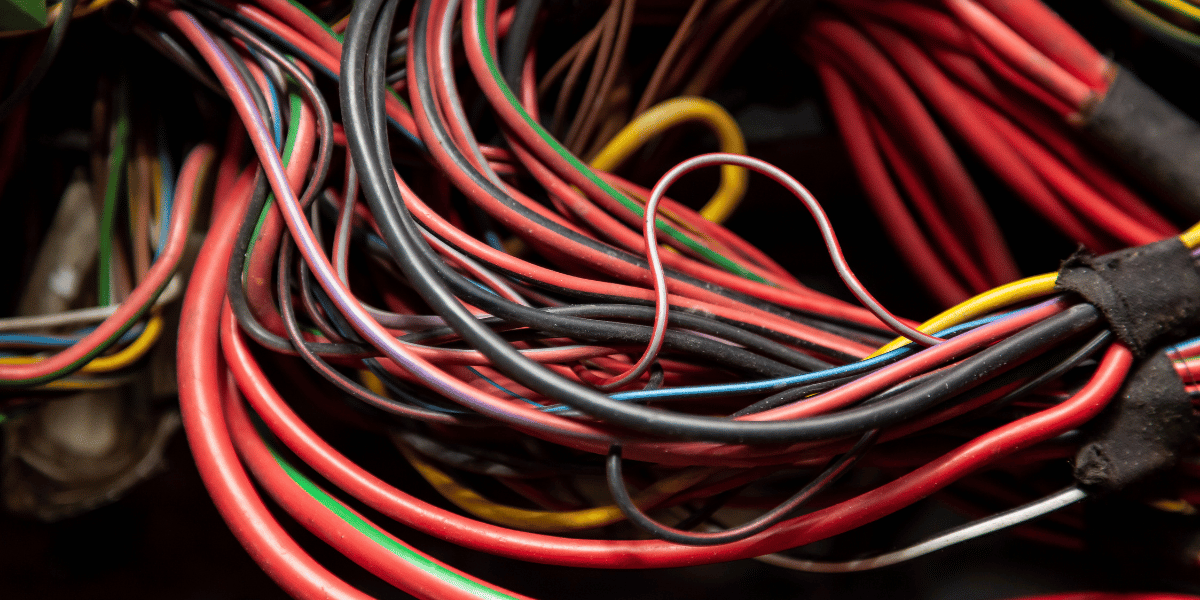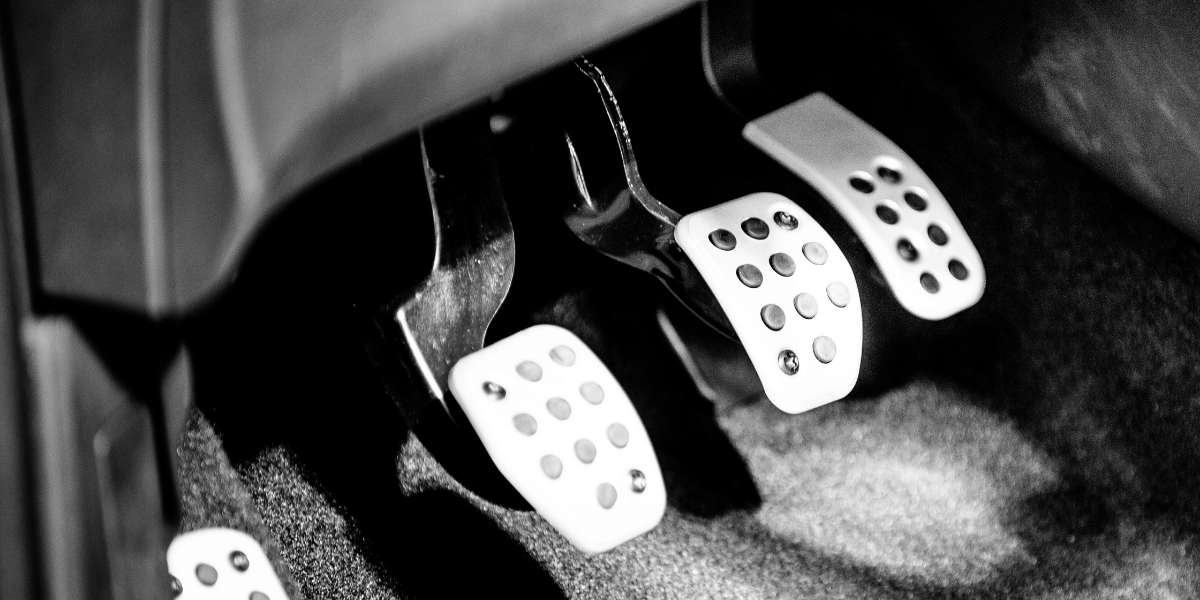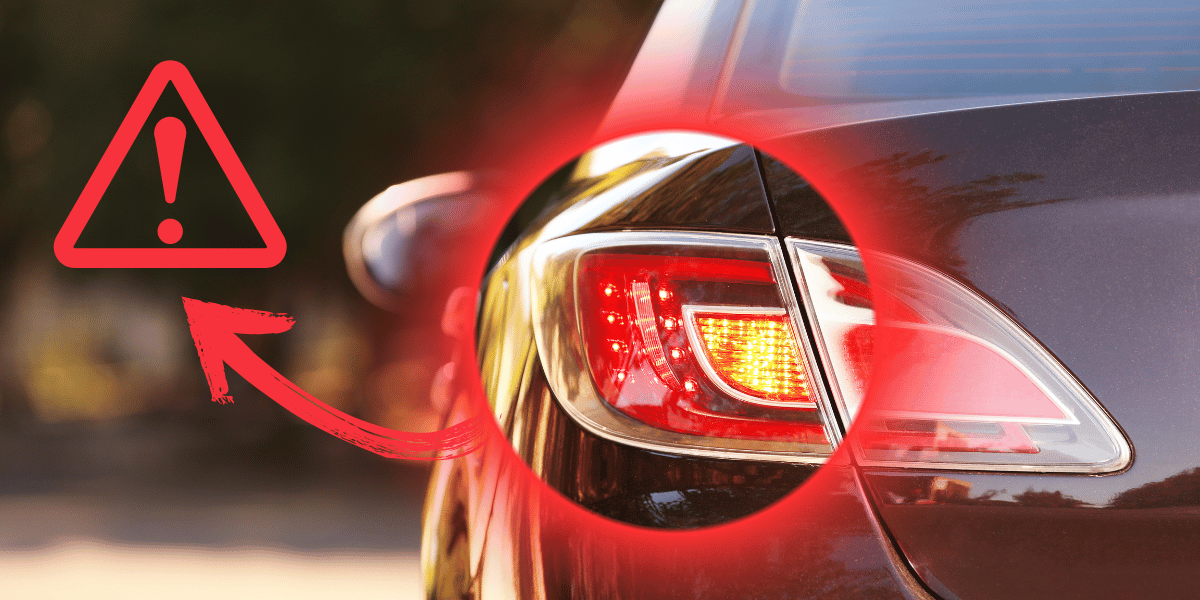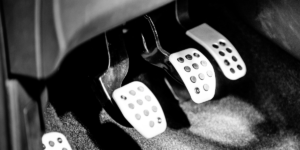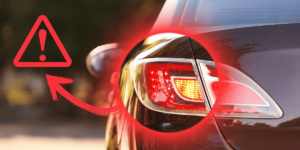Both experienced and new car fans know how important it is for the fuel system to work properly. The fuel pump is an important part of this system because it makes sure that your car gets the fuel it needs to keep going. But working on your car’s fuel pump can be hard, especially if you have to deal with a bunch of wires that don’t seem to go together.
We will learn all about GM fuel pump wire color codes in this in-depth help. We will solve the secrets of these wires so that you fully understand what each color means and how it can help you figure out what’s wrong with your fuel pump.
There are two lines that power the fuel pump: a power wire and a ground wire. Many times, the ground wire is black and the power line is red or orange. GM cars, on the other hand, use different color codes for their fuel pump wires based on the year and type of the car. This blog post will tell you everything you need to know about GM fuel pump wire color codes, including details about different car types and years. It will also talk about things like how to find fuel pump wires, how to test fuel pump wires, and how to fix problems with fuel pumps.
Different Vehicle Models and Years
GM cars have different color codes for the fuel pump wires based on the year and model of the car. This is a list of the color codes for the fuel pump wires in common GM cars:
GM Fuel Pump Wires Color Codes: A Comprehensive Overview
The fuel pump is an essential component of your car’s engine, and it is powered by two wires: a power wire and a ground wire. The power wire is usually red or orange, and the ground wire is usually black. However, GM vehicles use different color codes for their fuel pump wires, depending on the year and model of the vehicle.
Introduction
If you are a GM vehicle owner, it is important to know the color codes for the fuel pump wires. This information can be helpful if you need to diagnose or repair a fuel pump problem. It can also be helpful if you are installing a new fuel pump.
In this blog post, we will provide a comprehensive overview of GM fuel pump wire color codes. We will also cover topics such as how to identify fuel pump wires, how to test fuel pump wires, and how to troubleshoot fuel pump problems.
Different Vehicle Models and Years
The fuel pump wire color codes for GM vehicles vary depending on the year and model of the vehicle. Here is a table of the fuel pump wire color codes for popular GM vehicles:
| Year | Model | Power Wire Color | Ground Wire Color |
|---|---|---|---|
| 2000-2005 | Chevrolet Silverado/GMC Sierra | Purple | Black |
| 2000-2005 | Chevrolet Tahoe/Suburban/GMC Yukon | Purple | Black |
| 2000-2005 | Chevrolet Corvette | Purple | Black |
| 2000-2005 | Pontiac Grand Prix | Purple | Black |
| 2000-2005 | Oldsmobile Aurora | Purple | Black |
| 2006-2013 | Chevrolet Silverado/GMC Sierra | Gray | Black |
| 2006-2013 | Chevrolet Tahoe/Suburban/GMC Yukon | Gray | Black |
| 2006-2013 | Chevrolet Corvette | Gray | Black |
| 2006-2013 | Pontiac Grand Prix | Gray | Black |
| 2006-2013 | Oldsmobile Aurora | Gray | Black |
| 2014-Present | Chevrolet Silverado/GMC Sierra | Gray | Black |
| 2014-Present | Chevrolet Tahoe/Suburban/GMC Yukon | Gray | Black |
| 2014-Present | Chevrolet Corvette | Gray | Black |
How to Find Wires in a Fuel Pump?
If you’re not sure what the fuel pump wire color codes are for your GM car, you can look them up in the owner’s manual or service manual. You can also use these steps to find the fuel pump wires:
- Find the gas pump. Most of the time, the fuel pump is under the gas tank.
- From the gas tank to the fuel pump, follow the fuel lines.
- The fuel pump wires are the two wires that connect to the fuel pump.
How to Test Fuel Pump Wires?
You can use a multimeter to check the fuel pump lines if you think they might be broken. These steps will show you how to test the fuel pump wires:
- The fuel pump wires need to be disconnected from the pump.
- DC voltage setting should be chosen on the multimeter.
- This voltmeter has two leads. The positive lead goes to the power wire and the negative lead goes to the ground wire.
- Move the key to the “ON” spot.
- It should say 12 volts on the voltmeter.
- If it doesn’t show 12 volts, one or both of the fuel pump lines are broken.
How to Troubleshoot Fuel Pump Problems?
If your fuel pump is giving you trouble, here are some things you can try:
- Check the fuse for the fuel pump. Change the fuel pump switch if it’s broken.
- Take a look at the fuel pump switch. If the fuel pump circuit is broken, you should get a new one.
- Use a multimeter to check the lines to the fuel pump. Change either one or both of the fuel pump lines if they are broken.
- Check the gas pump. Change the fuel pump if it’s broken.
- If you don’t know how to fix a problem with the fuel pump, you should talk to a skilled mechanic.
In conclusion: The color codes for GM fuel pump wires depend on the year and type.
What is the blue wire on a fuel pump?
Most fuel pumps have a blue wire that goes to the power source. This means it connects the battery to the fuel pump and brings power to it. The fuel pump switch is turned on when the key is in the “ON” position. This sends power to the blue wire. The fuel pump is turned on by this power and starts to pump fuel to the engine. The fuel pump will not get power and will not be able to work if the blue wire is broken or removed. This might stop the engine from starting or make it stall.
Keep in mind that the colors of the wires on fuel tanks can change based on the car’s make and model. Please check your car’s owner’s manual or service instructions if you don’t know what color wires are on your car.
The blue line on a fuel pump also has the following things to remember:
- The blue wire on the fuel pump is usually thicker than the other wire because it has to carry more electricity.
- A crimp connector is generally used to connect the blue wire to the fuel pump.
- To keep the blue wire from shorting out, it should be shielded.
- If the blue wire is broken, it needs to be fixed or changed right away.
If you want to know more about the blue wire on your fuel pump, you should talk to a skilled mechanic.
How to Replace a GM Fuel Pump: A Step-by-Step Guide
Tools and Materials Needed:
- New GM fuel pump
- Jack and jack stands
- Wheel chocks
- Wrench set
- Socket set
- Screwdriver set
- Safety glasses
- Gloves
- Rags
What are the steps to replacing a fuel pump? A step-by-step guide
- Find the fuel pump that works with your car. This information can be found in the owner’s manual or service instructions for your car. A GM dealer or a car parts store are also places where you can buy a fuel pump.
- Put your car in park on a flat surface and press the parking brake. Put wheel chocks in front of and behind the back tires.
- Using the jack and jack stands, lift the back of the car. Pay attention to the safety tips that come with your jack and jack stands.
- Under the gas tank is where you’ll find the fuel pump. It’s usually found behind the back tire.
- Take the fuel lines off of the fuel pump. Make sure that you empty the fuel lines of any fuel into a container.
- Take the power plug off of the fuel pump.
- Take off the bolts that hold the fuel pump to the tank.
- Take the fuel pump down from the tank.
- The new fuel pump should be put in backwards. Make sure all the bolts are tight and that the fuel lines and electrical connections are back in place.
- Take the jack and jack stands off and lower the back of the car.
- Start the car and look for any leaks.
Important Tips for Safety:
- When working on your car, you should always wear safety glasses and gloves.
- When you work with fuel, be careful because it can catch fire.
- Before you work on the fuel pump, disconnect the negative battery wire.
- Let the fuel pressure in the system drop before you unhook the fuel lines.
- Make sure that all of the bolts and links are tight.
How to Fix Problems:
- If the car won’t start after the fuel pump is replaced, make sure the fuel lines and electrical connections are properly hooked up.
- Make sure the fuel pump is getting power if the car starts but doesn’t run well. With a multimeter, you can check the voltage at the fuel pump connection to do this.
- Making sure that all of the links are tight is important if the car is leaking fuel.
If you need help or have questions about replacing your GM fuel pump, you should talk to an experienced mechanic.
Troubleshooting GM Fuel Pump Problems
Some common problems with GM fuel pumps are:
- Stalling of the engine: If your engine stops running while you’re moving, it could mean that there is a problem with the fuel pump.
- Starting the engine is hard: If your engine is hard to start or won’t start at all, it could mean that there is a problem with the fuel pump.
- When your fuel economy drops all of a sudden, it could mean that there is a problem with your fuel pump.
- If you hear a buzzing or humming sound coming from the fuel tank, it could mean that there is a problem with the fuel pump.
- Getting your fuel pump checked out by a skilled mechanic is important if you have any of these symptoms.
A mechanic will usually check the fuel pressure and the fuel pump electrical connection to figure out what’s wrong with the fuel pump. If the fuel pressure is low or the electrical connection for the fuel pump is broken, you will need to get a new fuel pump.
How to Make Your GM Fuel Pump Better?
Changing your GM fuel pump can help you in a number of ways. A high-performance fuel pump can make your car run better and last longer. Another benefit is that it might help your car use less gas.
- You can get different kinds of fuel pump improvements. The following are some of the most famous upgrades:
- High-flow fuel pumps: These pumps can send more fuel to the engine, which can make it run better and use less gas.
- Fuel pumps that are heavy-duty: These pumps are made to handle the stress of high-performance engines and race situations.
- Variable fuel pumps: With variable fuel pumps, you can fine-tune how much fuel goes to your engine.
When picking out a new fuel pump, you should think about the things below:
- What kind of engine you have: Different engines need different amounts of fuel. It is important to pick a fuel pump that works with your car.
- The way you drive: If you drive fast or pull big things behind you, you will need a fuel pump that can keep up with the extra use.
- Money plan: New fuel pumps can cost anywhere from a few hundred dollars to over a thousand dollars. Pick a gas pump that fits your spend and your wants.
If you’re not sure which fuel pump upgrade is best for your car, you should talk to an experienced mechanic.
DIY GM Fuel Pump Wiring Projects
Here are some projects you can do yourself to wire a GM fuel pump:
- You should install a fuel pump switch. This will help your fuel pump work better and be more reliable. It may also help keep your fuel pump in good shape.
- Connect a fuel pump to a switch. This can help if you want to physically turn the fuel pump on and off. In this case, you might want to do it if you are racing your car or working on the engine.
- Putting in a fuel pump controller: With a fuel pump controller, you can change the fuel flow to meet the needs of your engine. This could make the car run better and use less gas.
- Update the wiring for the fuel pump. If you are getting a high-performance fuel pump, you may need to update the wiring for the fuel pump to handle the extra current.
In conclusion: Doing your own GM fuel pump wiring jobs can be a great way to make your car run better, last longer, and use less gas. It is important to be careful and follow all safety rules when working on the wires in your car, though.
GM Fuel Pump Wires Color Codes with Diagram
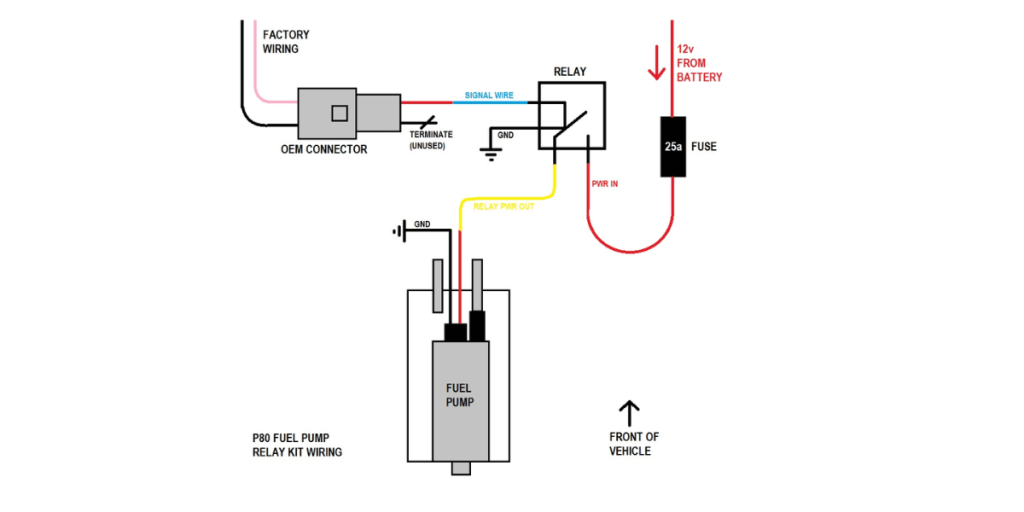
What is Gm Fuel Pump Wiring Harness?
A GM fuel pump wiring harness is a group of lines that connect the fuel pump to the electrical system of the car. The following lines are usually on it:
- Power wire: This wire connects the battery to the fuel pump and brings electricity to it.
- Ground wire: This wire links the fuel pump to the frame of the car.
- The fuel pump control wire sends a message to the fuel pump from the engine control module (ECM). The ECM uses this information to tell the fuel pump how to work.
Most of the time, the wiring cable for the fuel pump is under the gas tank. It’s important to check the fuel pump wiring harness often for harm or signs of wear. Damage to the fuel pump wiring system can make the fuel pump stop working or work in a strange way.
For GM fuel pump wiring connections, these are some of the most common problems that can happen:
- Corrosion: Over time, corrosion can form on the fuel pump wiring harness’s electrical connectors and lines. This could make the fuel pump stop working or work in a strange way.
- Damage: Animals, road debris, or other things can damage the fuel pump wire harness. This can also make the fuel pump stop working or work in a strange way.
- Short circuits: When two wires in the fuel pump wiring system touch each other, a short circuit can happen. This could make the fuel pump stop working or work in a strange way.
It is important to have a trained mechanic look at the fuel pump wiring harness if your fuel pump is giving you trouble. The tech will be able to figure out what’s wrong with the fuel pump wiring harness and fix it.
Here are some ways to keep your GM fuel pump wiring harness in good shape:
- Check the wire harness for the fuel pump often for damage or signs of wear.
- Clean and remove any dirt or dust from the fuel pump wire harness.
- The fuel pump wiring cable will stay in good shape if you use a rust inhibitor.
- Regularly have a trained mechanic look over the fuel pump wiring harness.
If you follow these tips, you can help keep your GM fuel pump wiring harness in good shape and make sure that your fuel pump works right.
How Much Does Replacing a Fuel Pump Cost?
How much it costs to replace a fuel pump depends on the type of car, its model, and how much the mechanic charges for their time. A new fuel pump, on the other hand, costs between $800 and $1,200 on average.
These are the different prices that come with replacing a fuel pump:
- Fuel Tank: The price of the fuel pump can vary from $200 to $500, based on the type of car and its make and model.
- Labor Cost: The cost of labor to change a fuel pump can be anywhere from $400 to $700, based on how hard the job is.
- Costs other than the fuel pump: Besides the cost of the fuel pump, there may be other costs, like the cost of fixing the fuel filter or the cost of towing the car to the mechanic.
Here are some examples of how much it costs to replace a fuel pump in different cars:
- $800 to $1,000 for a Honda Civic
- Camry Toyota: $900 to $1,100
- Ford F-150: $1,000 to $1,200
- Chevy Silverado: $1,100 to $1,300
- Dodge Ram 1500: $1,200 to $1,400
Keep in mind that these are just guesses. Depending on the above factors, the real cost of changing a fuel pump may be different. If you want to replace your fuel pump, you should get prices from more than one mechanic before making a choice. It is also important to pick a mechanic who is licensed and has done fuel pump replacements before.
Frequently Asked Questions
Q: Why do GM vehicles use different fuel pump wire color codes?
A: GM uses different wire color codes across various vehicle models and years to facilitate identification and maintenance. These codes help technicians and DIY enthusiasts connect the right wires, ensuring that the fuel pump functions correctly. However, it can be confusing for those unfamiliar with the codes.
Q: How do I find the specific wire color codes for my GM vehicle?
A: Locating the wire color codes for your GM vehicle can be tricky. We recommend referring to your vehicle’s repair manual or contacting a dealership for information specific to your make, model, and year.
Q: What are the most common wire colors used for GM fuel pumps?
A: The most common wire colors for GM fuel pumps are gray (power supply), black (ground), and purple (fuel level sensor signal). However, this can vary, so always double-check your vehicle’s specific wire color codes.
Q: Can I identify the wires without the official color codes?
A: It’s possible to identify wires without the official color codes, but it’s not recommended. Misidentifying wires can lead to electrical problems or even vehicle damage. Always consult the official color codes for your safety.
Q: What tools do I need to test GM fuel pump wires?
A: To test GM fuel pump wires, you’ll need a multimeter or a test light, wire connectors, and a wiring diagram specific to your vehicle. These tools help ensure accurate testing and diagnosis.
Q: My fuel pump is malfunctioning. How can I use wire color codes to diagnose the issue?
A: If your fuel pump is malfunctioning, wire color codes can be instrumental in troubleshooting. By testing the wires, you can determine if the issue lies in the wiring, the fuel pump itself, or other related components.
Q: Are GM fuel pump wire color codes standard across all models and years?
A: GM’s wire color codes can vary across different models and years. While some codes are consistent, it’s crucial to consult the specific information for your vehicle. The best reference is your vehicle’s repair manual.
Q: What are the symptoms of a faulty GM fuel pump wiring harness?
A: Symptoms of a faulty wiring harness can include issues with starting your vehicle, engine misfires, or erratic fuel pump operation.
Q: How can I prevent my GM fuel pump wiring harness from failing?
A: Preventative maintenance is key. Keep your vehicle in good condition, avoid overloading the fuel pump, and regularly check and replace worn wiring.
Q: How can I replace a GM fuel pump wiring harness?
A: Replacing a wiring harness requires some mechanical expertise. Follow your vehicle’s repair manual, or consider seeking professional help.
Q: How much does it cost to replace a GM fuel pump wiring harness?
A: Costs can vary depending on the make and model of your vehicle, the labor involved, and whether you choose to replace it yourself or have it done professionally. Prices can range from a few hundred to over a thousand dollars.
Q: Can I replace a GM fuel pump wiring harness myself?
A: While it’s possible for experienced DIYers, it’s recommended to have a professional perform this task, especially if you lack the necessary skills and tools.
Q: What are the 2 hoses on a fuel pump?
A: The two hoses on a fuel pump typically include the fuel supply line (brings fuel from the tank) and the fuel return line (returns excess fuel to the tank).
Q: Is blue positive or negative wire?
A: Wire color coding can vary, but blue is often used as a positive wire for certain applications. Always confirm the wiring codes for your specific system.
Q: What is the most common cause of fuel pump failure?
A: The most common cause of fuel pump failure is wear and tear due to continuous use. Contaminated fuel, overheating, and electrical issues can also contribute.
Q: How can you check if your fuel pump is bad?
A: Common signs of a bad fuel pump include engine sputtering, poor acceleration, stalling, and loss of power. You can also test the fuel pressure and electrical connections.
Q: How many amps is a fuel pump wire?
A: The current draw for a fuel pump wire can vary depending on the pump’s design and the vehicle’s fuel requirements. It typically ranges from 10 to 15 amps.
Q: Can you wire a fuel pump without a relay?
A: Wiring a fuel pump without a relay is not recommended for safety reasons. Relays provide a level of protection and control for the fuel pump.
Q: How much does it cost to replace a fuel pump line?
A: The cost of replacing a fuel pump line can vary depending on the vehicle’s make and model, the length of the line, and the labor involved. It can range from $50 to several hundred dollars.
Q: Is it worth replacing a fuel pump on an old car?
A: The decision to replace a fuel pump on an old car depends on the vehicle’s overall condition and value. If the car is still in good shape and the fuel pump is the only major issue, it may be worth replacing.
Q: Why is it so expensive to replace a fuel pump?
A: Fuel pump replacement costs include the price of the pump itself, labor, and potentially other related repairs. The complexity of accessing the fuel pump, especially in modern vehicles, contributes to the cost.
Q: Can a wiring harness be repaired?
A: Wiring harnesses can be repaired, but it’s often more practical to replace them, especially if they have extensive damage or wear.
Q: What size wire is needed for a fuel pump?
A: The wire size needed for a fuel pump can vary, but typically, 10 to 12-gauge wire is suitable for most fuel pump applications.
Conclusion
The GM fuel pump wire color codes may look hard to understand at first, but with the information in this guide, you’ll be well on your way to understanding this important part of car maintenance. You now know what these codes mean and how to find them in different GM car models and years. You also know what tools and steps you need to safely test and fix fuel pump lines.
We hope that the frequently asked questions (FAQs) have answered your questions and eased your worries. When it comes to keeping your car’s fuel system, knowing these wire color codes and what they mean can make all the difference. Whether you’re an experienced do-it-yourselfer or a beginner in the world of auto repair, this information will help you make smart choices and confidently complete jobs.
When you work on the electrical systems in your car, remember that safety should always come first. To make sure you do it safely and correctly, follow best practices, look at your car’s repair manual, and get help from a professional when you need to. It is now easier to understand the signs of a bad GM fuel pump wiring harness, how to keep it from breaking, and how to fix it. Even though prices may vary, it is very important to know how important good wiring is and how it affects the performance of your vehicle.
If you want to fix cars, you need to know a lot about them. The goal of this guide was to give you the knowledge you need to safely work on your GM car’s fuel pump wires. When you’re working on a problem or doing regular repair on your car, the tips you’ve learned here will help you. When you look under the hood of your GM car the next time and see a web of lines, you won’t be totally confused. Instead, you’ll be able to easily break the code, test accurately, and fix problems.
Enjoy your drive and stay safe!
